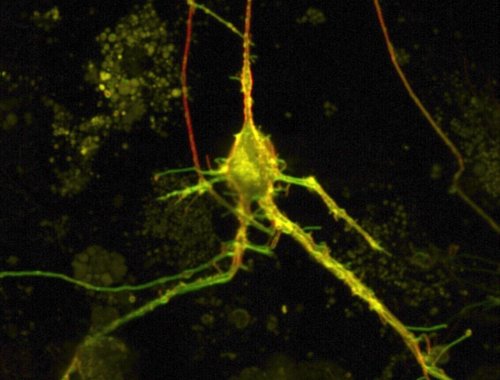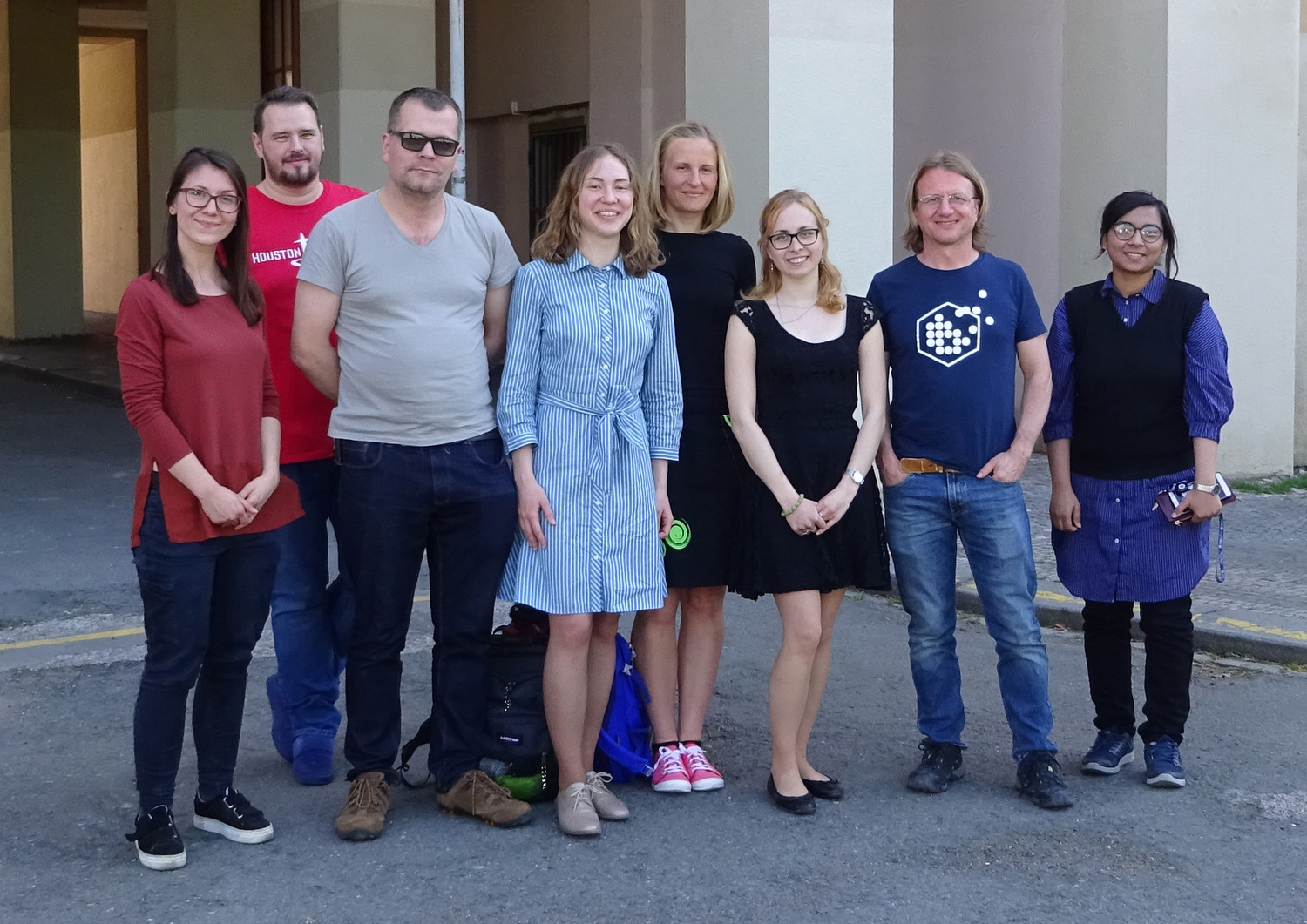About our group
Josef Lazar's group moved to the 1st Faculty of Medicine, Charles University. The content of this page is no longer updated and serves for archive purposes only.
The Laboratory of Advanced Optical Microscopy develops advanced techniques of optical microscopy and uses them to gain information about mechanisms of molecular processes taking place in living cells and organisms. The Laboratory has developed the technique of two-photon polarization microscopy, which allows sensitive observations of changes in conformation of membrane proteins. Such conformational changes can occur, for example, in response to a therapeutic drug or to changes in cell membrane voltage. The laboratory is equipped by a state-of-the-art laser scanning confocal/two-photon microscope (Olympus FluoView 1200MPE-IX83) adapted for single- and two-photon polarization microscopy. The microscope's versatile design enables accommodating a wide range of microscopy techniques and custom-made solutions. The Laboratory's multidisciplinary expertise in biochemistry, molecular and cell biology, biophysics, optics, electronic engineering, computer programming and mathematical modeling allows tackling of a wide range of difficult scientific questions.

Publications
All publications
Group


